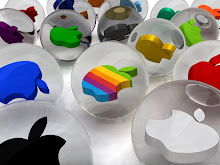SYSTEM UNIT
- also known as system chassis
- contains electronic components that make up a computer system
Basis categories of system units
ELECTRONIC DATA AND INSTRUCTIONS
- Data and instructions are represented electronically
- Two-state or binary system is used to represent data and instructions
· BS consists of only two digits- 0 and 1
· Bit = short for binary digit
· Bytes = bits are combined into group of eight
- Three types of binary coding schemes
· ASCII - American Standard Code for Information Interchange
· EBCDIC - Extended Binary Coded Decimal Interchange Code
· Unicode– handles languages with large numbers of characters
SYSTEM BOARD
- Connects all components
- Allows communication between devices
- Main board or motherboard
- Circuit boardelectronic components
· Sockets
· Slots
· Bus lines
MICROPROCESSOR
- Central Processing Unit (CPU)
- Two Basic Components
· Control unit
· Arithmetic-logic unit (ALU)
Microprocessor Chips
- Chip capacities are expressed in word sizes
- Two Recent Significant Developments
· 64-bit processors
~ Have become standard for most of today’s desktop and laptop computers
· Multi-Core Chips
~ Can provide two separate and independent CPUs
~ Parallel processing
Specialty Processors
- Coprocessors
· Designed to improve specific computing operations
· Graphics coprocessors
- Smart cards
· Credit card sized with an embedded chip
· Used by many universities
- Specialty processors in cars
· As many as 70
· Used to control features
- RFID tags
· Information chips
· Used for tracking purposes
MEMORY
- Holding area for data, instructions, and information
- Memory is contained on chips connected to the system board
RAM
- Called VOLATILE STORAGE/TEMPORARY
· Their content will lose if power is disrupted
- Cache memory
· High-speed holding area for frequently useddata and information
- DIMM (dual in-line memory module)
· Used to expand memory
- Virtual memory
· Divides program into parts that are read inRAM as needed
ROM
- Read-only memory (ROM) chips are not volatile and cannot be changed by the user
- CPU can read, or retrieve data and programs but the computer cannot write
- Contain special instructions
· Needed to start a computer
· Give keyboard keys their special capabilities
· Put characters on screen
Flash Memory
- Flash memory offers a combination of the features of RAM and ROM.
- Flash memory is used for a wide of range of applications.
- If changes are made to the computer system, these changes are reflected in flash memory.
EXPANSION SLOTS AND CARDS
- Insert expansion cards into slot
- Ports on the card allow cables connect to devices outside the SU
- Types of EC:
· Graphics cards
· Sound cards
· Modem cards
· Network interface cards (NIC)
· PC cards and Express cards
· TV tuner- Allows you to view your favourite TV shows
BUS LINES
- Connect parts of the CPU to each other
- Data roadway for traveling bits
· Measured as bus width
· More lanes, faster traffic
- Two basic categories
· System buses
· Expansion buses
Expansion Buses
- Connects the CPU to other components on the system board, including expansion slots
- Principal types
· PCI Express (PCIe)
· Peripheral Component Interconnect (PCI)
· Universal serial bus (USB)
· FireWire buses
· Serial Advanced Technology Attachment (SATA)
PORTS
- Socket for connecting external devices
- Ports can connect directly to the system board or they can connect to cards that are inserted into slots on the system board
Standard Ports
- Four common ports
· VGA
· USB ports
· FireWire ports
· Ethernet ports
Legacy Ports
- Serial ports
- Parallel ports
- Keyboard and mouse ports
- Game ports
- Infrared data association (IrDA)
Specialized Ports
- Three specialized ports
· Musical Instrument digital interface (MIDI)
· Sony/Philips Digital Interconnect Format (S/PDIF)
· High Definition Multimedia Interface (HDMI)
Cables
- Used to connect exterior devices to the system unit via the ports
- One end of the cable is attached to the device and the other end has a connector that is attached to a matching connector on the port
POWER SUPPLY
- Computers require direct current (DC)
- DC power provided by converting alternating current (AC) from wall outlets or batteries
- Desktop computers use power supply units
- Notebooks and handhelds use AC adapters
Careers in IT
- Computer technicians repair and install computer components and systems
- Employers look for
· Certification in computer repair
· Good communication skills
- Continued education is required
- Computer technicians can expect to earn an hourly wage of $13.50 to $22.50
• References from
1. Computing Essentials Complete 2010 by Timothy J.O'Leary and Linda I.O'Leary from McGRAW Hill
2.http://en.wikipedia.org/wiki/Computer_case3.http://www.techterms.com/definition/system_unit
















1 comments:
Networking Opportunities: Engaging with bloggers and authors can lead to valuable networking opportunities. Unlock For VPN Traffic Building connections within your field of interest can open doors to collaborations, partnerships, and even career opportunities.
Post a Comment